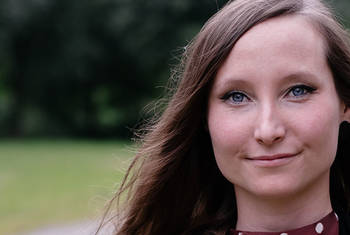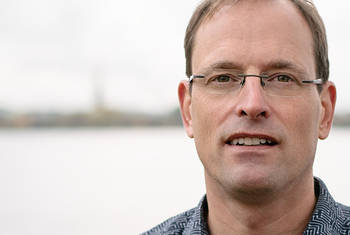Judith Klatt Was The Oxygenation of the Earth Linked to Increasing Day Length?
Judith Klatt is a Research Scientist in the Microsensor Group at the Max Planck Institute for Marine Microbiology in Bremen where she completed her PhD. Klatt has also been a postdoctoral researcher in Earth and Environmental Sciences at the University of Michigan. Her main research interests include the origins of photosynthesis, the physiology of versatile phototrophs and microbial mats as windows into the ancient oceans. Her work is field-oriented and she explores extreme microbial ecosystems all over the world, such as in the high altitude Andes.
Area of Research
Microbial Ecology
since 2018
2015-2017
Postdoctoral Researcher
University of Michigan, Ann Arbor
Geomicrobiology Lab, Earth and Environmental Sciences
2015
Dr. rer. nat
Max Planck Institute for Marine Microbiology (more details)
Thesis: ´Regulation of photosynthetic activity in sulphidic environments` (Summa cum laude) University of Bremen
2009
MA Marine Microbiology
Max Planck Institute for Marine Microbiology (more details)
Thesis: ‘Role of light in oxygen and carbon cycling by anoxygenic phototrophs in microbial mats’
2007
BA Life Science
University of Hanover (Leibniz Universität Hannover)
-
-
-
-
-
Fellowships
- Turner Fellowship, Department of Earth And Environmental Sciences, University of Michigan (2015 - 2017)
Prizes
- 65th Lindau Nobel Laureate Meeting (2015)
- 'For Women in Science Award’ by LOreal, the German UNESCO agency and the Christiane Nüsslein-Volhard foundation (2011)
- Christiane Nüsslein-Volhard foundation grant for mothers in science (2011)
- NSF, Revealing the interplay between light, sulfur cycling, and oxygen production in cyanobacterial mats (c-author; PI: Greg Dick, 2017 - 2019)

Max Planck Institute for Marine Microbiology
BremenAt the Max Planck Institute for Marine Microbiology (MPIMM), we are investigating microorganisms in the sea and other waters. What role do they play, what are their characteristics and how great is their biodiversity? What is the contribution of microorganisms to the global cycles of carbon, nitrogen, sulfur and iron? What does this mean for our environment and our climate? These and many other questions will be answered by researchers from around the world, engineers, technicians and numerous others at the MPIMM. Their fields of expertise range from microbiology to microsensors, geochemistry to genome analysis and molecular ecology to modelling.
The MPIMM was founded in 1992 and is part of the Max Planck Society (MPG). Since 2002, the MPIMM has been running the International Max Planck Research School of Marine Microbiology (MarMic), a program for highly qualified master students and graduates of our institute and the Bremen Research Alliance partner Bremen University, Alfred Wegener Institute Helmholtz Center for Polar and Marine Research (AWI) and Jacobs University.
Department
Microsensor Group
We study microbial ecology in a wide range of environments: seep systems, deep-sea and coastal sediments, coral reefs, anoxic lakes, microbial mats, animal-associated microbes and more. The research is highly diverse, encompassing themes of photosynthesis, nitrogen and sulfur cycling, calcification, habitat mapping, ecosystem productivity and cell physiology.
Most themes involve the study of the functioning of intact microbial communities with non-invasive methods that allow as direct an observation as possible. To this end, we develop, construct and use microsensors for laboratory and in-situ measurements. These tiny sensors, typically made of extruded glass, have tip sizes in the order of 5-50 μm and can rapidly measure chemical fluxes caused by cells.These microsensors are also applied towards measuring ecosystem fluxes with the eddy covariance technique. We also develop and use several imaging technologies to non-invasively map the function and describe the structure of habitats. The technologies we employ are hyperspectral imaging, planar optode imaging and beta radiation imaging. Naturally, we combine these non-invasive studies with laboratory analyses such as photopigment and gas chromatography, isotopic incubations. nutrient analyses, etc.
Together with the MPI workshops, we continuously strive to develop novel methods, and apply them in our research. We collaborate widely with other institutes and with groups within the institute to share knowledge and ideas.
Map
Daylength on Earth has increased very gradually from something like 4-12 hours 4.5 billion year ago to 24 hours at present. In this video, JUDITH KLATT explores whether the emergence of oxygen on our planet, vital to the evolution of life, can be linked to changes in the Earth’s rotation rate (daylength). Klatt’s study focuses on the release of oxygen from microbial mats. Modeling and testing in the Middle Island Sinkhole under Lake Huron reveals a positive relationship between daylength and oxygen release. Further research will seek to more specifically identify how microbial mats imprint in the geological record.
LT Video Publication DOI: https://doi.org/10.21036/LTPUB10945
Possible Link Between Earth’s Rotation Rate and Oxygenation.
- J.M. Klatt, A. Chennu, B.K. Arbic and et al.
- Nature Geoscience
- Published in 2021









